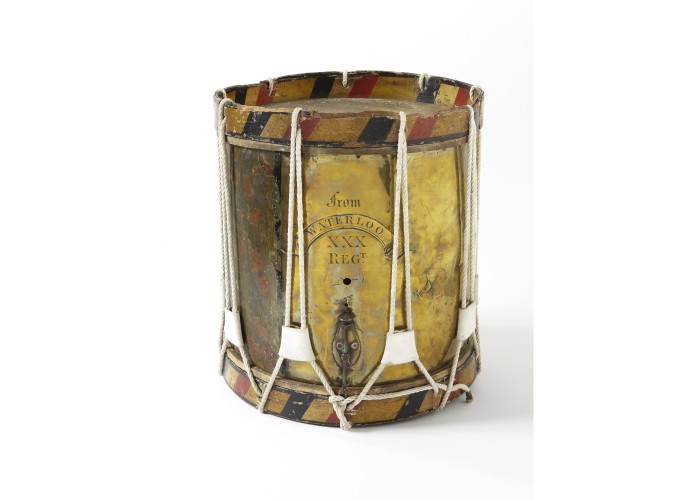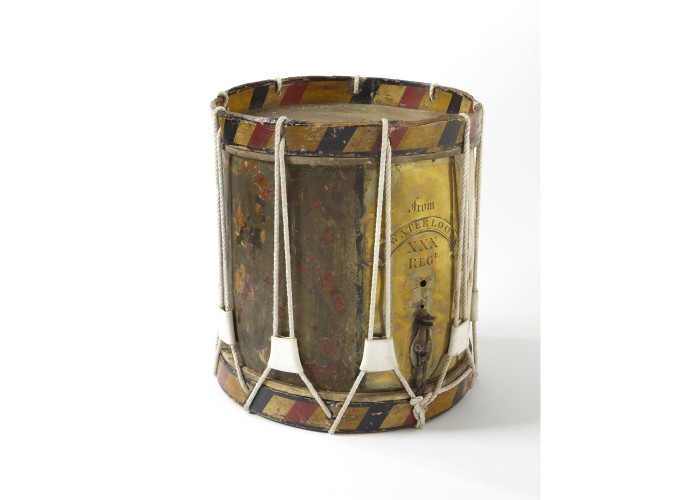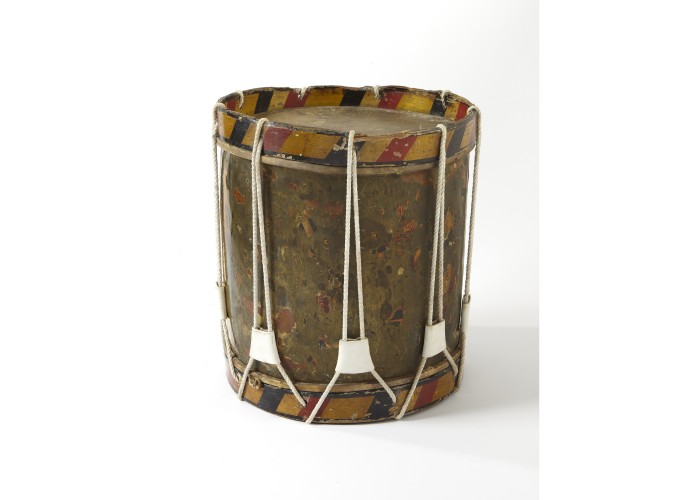Drum Captured at Waterloo
This is a French military drum, captured by British troops at the Battle of Waterloo. The drum is probably the oldest and the simplest of military musical instruments, although it did not appear in Europe until the time of the Crusades (1095-1291), when it was copied from Islamic armies. It was used to communicate commands on the battlefield and to ensure soldiers acted in unison on confusing, noisy battlefields.
Long before the Napoleonic period, the drum already controlled the soldier’s life, signalling reveille, assembly and curfew, for example. He marched into battle to the sound of the drum and was familiar with the series of beats that conveyed orders above the noise of battle.
Drummers, men rather than boys, would be trained by a drum major. In British regiments they traditionally wore a reverse of the regiment’s colours, yellow with red facings, for example.
This drum was carried at Waterloo by a drummer of the French Regiment 105ieme de la Ligne, and then became a battle trophy of the British 2/30th. The French battalion had fought in d’Erlon’s I corps, in Bourgeois’s brigade of Quiot’s first infantry division. As such, they had led Quiot’s division during d’Erlon’s initially successful advance against the left of the allied line early in the battle. Their position made them vulnerable to the counter-charge of the Union Brigade, when they lost their eagle standard (see Related Objects, below).
The 2/30th were in the centre of the Allied line, in Halkett’s British brigade of Alten’s 3rd British Infantry Division. They only encountered the French unit late in the battle, when survivors of Drouet d’Erlon’s corps, having advanced in support of the Grenadiers of the Imperial Guard, were exposed to attack after the repulse of the Guard. Presumably, the drum was abandoned in the subsequent rout.
-
Education overview
Learn more about the 30th of Foot, the British regiment that captured this French drum, via the Waterloo 200 Schools E-Book. Millthorpe School have researched the life of a local Waterloo veteran, Drummer James Asquith, and created a tribute to his service in the Waterloo Campaign.
If you’re a teacher, student, or parent, you can join the Waterloo 200 Schools programme. To find out how to sign up your class and discover your local Waterloo history, contact [email protected].
-
Curatorial info
- Originating Museum: Lancashire Infantry Museum
-
Use this image
You can download and use the high resolution image for use in a non-profit environment such as a school or college, but please take note of the license type and rights holder information below
- Rights Holder: Copyright Lancashire Infantry Museum. Photography Relic Imaging Ltd.
- License Type: Creative Commons
Find it here
This object is in the collection of Lancashire Infantry Museum











